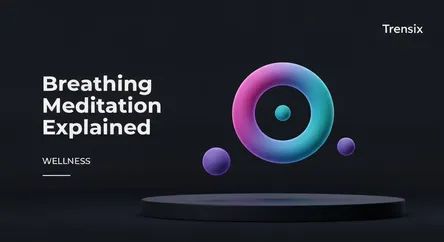Wellness
Breathing Meditation Explained

Discover how conscious breathing techniques can calm your mind, reduce stress, and improve overall well-being in minutes.
What is it?
Breathing meditation, often called breathwork, involves consciously controlling your breathing patterns to improve your mental and physical state. It is a form of mindfulness where you intentionally focus on the sensation of inhaling and exhaling. Popular techniques include Diaphragmatic (belly) breathing, Box Breathing (inhaling, holding, exhaling, and holding for an equal count), and the 4-7-8 method, known for its calming effect. By using the breath as an anchor for attention, these practices help quiet the mind and relax the body.
Why is it trending?
The popularity of breathing meditation has surged with the growing global focus on mental health and accessible self-care tools. Increased rates of stress and anxiety have led people to seek natural and effective relief. Breathwork is simple, free, and can be practiced anywhere, making it a highly convenient wellness tool. The COVID-19 pandemic also heightened awareness of respiratory health, further fueling interest. Its adoption in corporate wellness programs and promotion by health influencers have helped solidify its place in the mainstream.
How does it affect people?
Practicing these techniques directly impacts the autonomic nervous system, helping to shift the body from a stressed, "fight-or-flight" state to a calm, "rest-and-digest" response. This physiological shift can lead to immediate benefits like reduced anxiety, a lower heart rate, and decreased blood pressure. Regular practice improves emotional regulation, enhances focus, and can lead to better sleep quality. Over time, it helps build resilience to stress, improve mood, and foster a greater sense of overall well-being.